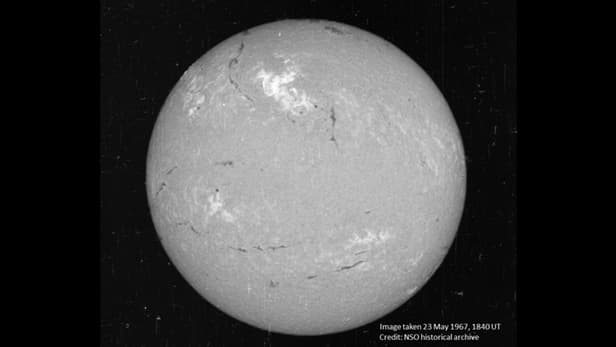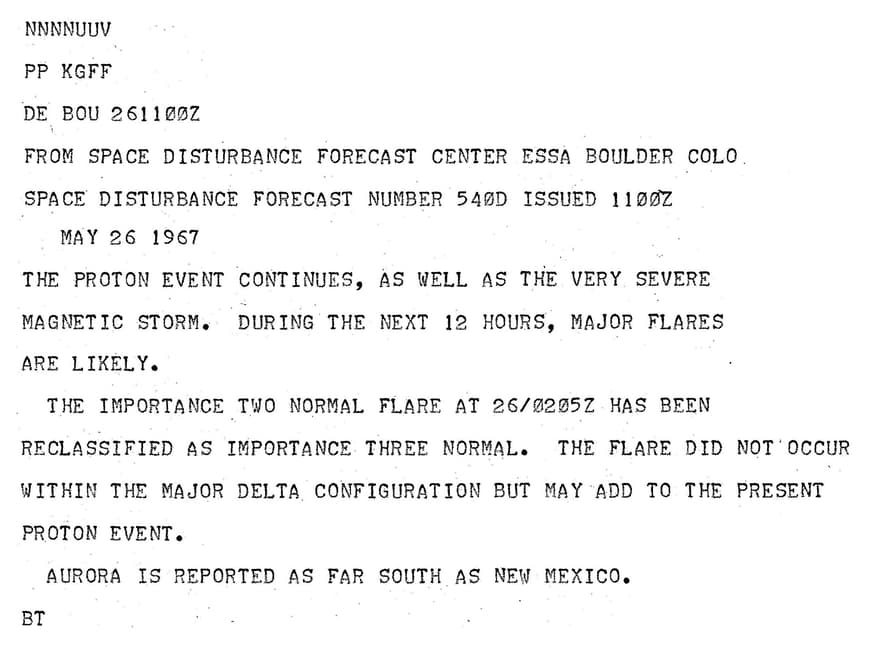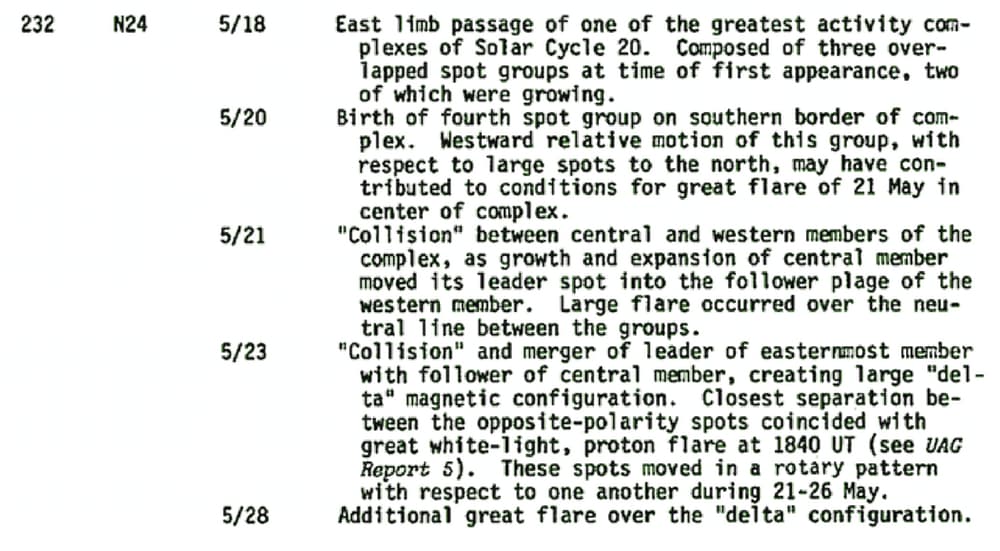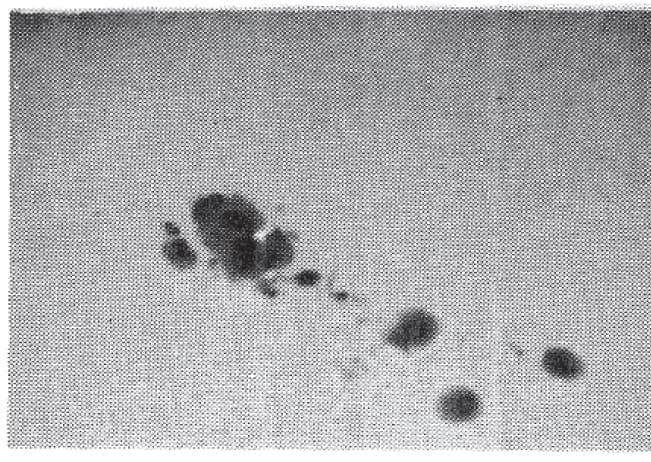Powerful solar storm could have sparked a nuclear war in 1967

Image on the Sun captured on May 23, 1967 (Credit: National Solar Observatory Historical Archive)
According to a new study accepted for publication in the journal Space Weather, the US was taken to the brink of war with the Soviet Union in 1967, when a powerful solar storm wreaked havoc with early warning systems designed to detect incoming Intercontinental Ballistic Missiles. The drama unfolded with a backdrop of extreme Cold War tensions, and a proliferation of nuclear weapons brought about by the doctrine of mutually assured destruction.
Over the course of the 1960s, the US relied on the Ballistic Early Warning System (BMEWS), which, operated by the North American Aerospace Defence Command (NORAD), was tasked with providing a 15-minute warning in the event of a nuclear strike. Any attempt to jam or disrupt this system would have been treated as an act of war.
In the late 1950s, the US military began monitoring our Sun in order to detect solar events that create electromagnetic interference capable of disrupting radio communications and power line transmissions. These disturbances are known to follow in the wake of powerful solar flares. Electromagnetic disturbances occur as stellar material cast out during a flare event interacts with Earth's magnetosphere, creating a geomagnetic storm.
In the 1960s, the US Air Force established the Air Weather Service (AWS), which, via a network of observers distributed both in the US and abroad, kept NORAD appraised of any potentially hazardous space weather events. By 1967, several observatories were reporting to NORAD on a daily basis.
On May 18, 1967, astronomers detected a large group of sunspots mottling a region of the Sun's surface. Then, on May 23, observatories in New Mexico and Colorado observed an enormous flare, coupled with an unprecedented increase in radio wave emissions from our Sun.
The geomagnetic storm resulting from the solar flare struck Earth some 40 hours later, effectively rendering three BMEWS located in the far northern hemisphere inoperable. Assuming that the disruption was the prelude to a potential nuclear strike from the Soviet Union, US military commanders readied additional aircraft to supplement the USAF's nuclear bomb wielding alert aircraft.
Thankfully, NORAD requested information from its Solar Forcast Center as to any potential solar activity that could be influencing the military assets. NORAD was informed as to the extent of the storm, and discovered that the three BMEWS experiencing the jamming had a direct line of sight with the Sun, and so could have been overwhelmed by the interference created by our star. It later became apparent that, as the geomagnetic storm began to subside, so too did the jamming effect disrupting the early warning system.
Individuals behind the study, including retired military personnel tasked with analyzing the storm in 1967, believe that information from the Solar Forecast Center could have been passed up the chain of command straight to the desk of then President Lyndon B. Johnson. The authors assert that this information was instrumental in preventing further military action over the course of the jamming incident, which could conceivably have led to a nuclear exchange between the US and the Soviet Union.
The effects of the storm went on to wreak havoc with US radio communications for nearly a week, and caused the Northern Lights, which can usually only be observed in the Arctic Circle, to be visible as far south as New Mexico.
Source: American Geophysical Union



